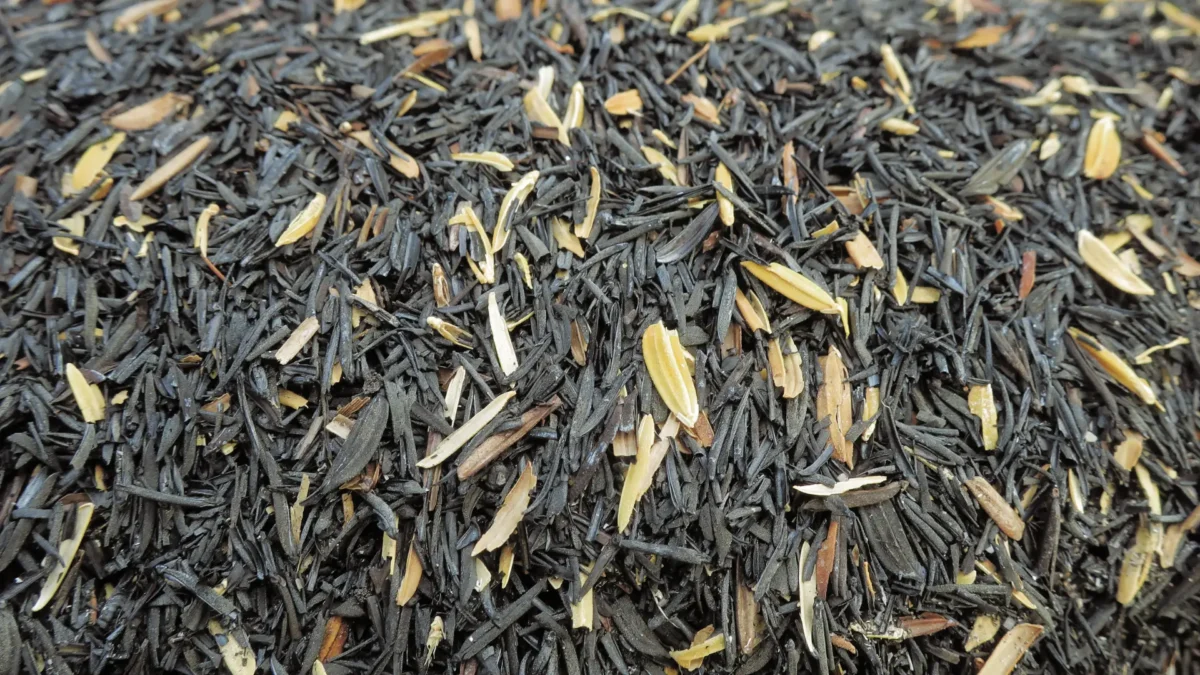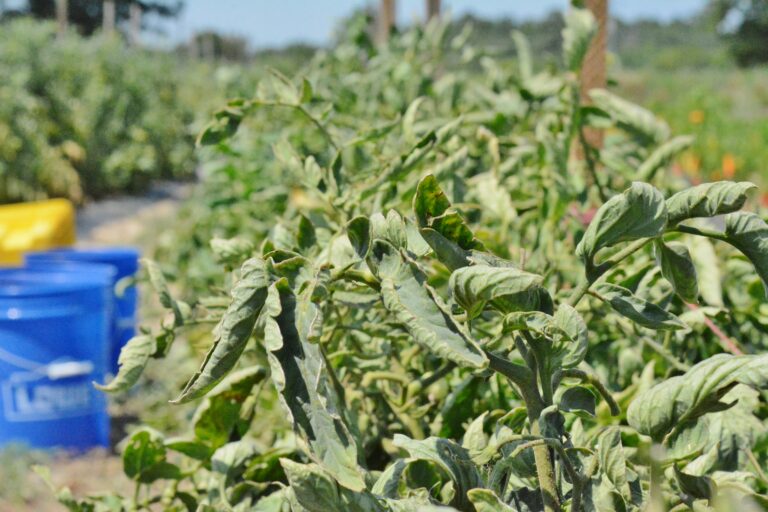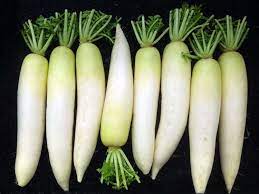Carbonized Rice Hulls 101: Preparation and Benefits Explained
Did you know that something as simple as rice hulls can be transformed into a powerful gardening resource? Enter carbonized rice hulls – the unsung hero of sustainable gardening. But what exactly are carbonized rice hulls, and how can they revolutionize your gardening experience? Imagine a lightweight, nutrient-rich substrate that promotes healthy plant growth and enhances soil structure.
With carbonized rice hulls, you can achieve just that and more. In this guide, we’ll delve into the preparation and benefits of carbonized rice hulls, uncovering the secrets to unlocking their full potential in your garden. Get ready to elevate your gardening game and reap the rewards of this eco-friendly gardening solution!
Table of Contents
The Process of Carbonizing Rice Hulls
To carbonize rice hulls, the first step is to collect the hulls from the rice milling process. These hulls, which are the outer protective covering of the rice grain, are typically discarded as waste. However, they can be transformed into a valuable resource through carbonization.
- Drying Stage:
- Moisture Removal: Collect rice hulls and spread them thinly for natural air drying.
- Complete Dryness: Ensure hulls are completely dry before proceeding to carbonization.
- Carbonization Chamber:
- Purpose: Transfer dried hulls to a sealed carbonization chamber or kiln.
- Controlled Environment: Create an oxygen-free setting for the process.
- High Temperatures: Heat hulls to 400-600°C to promote thermal decomposition.
- Process Duration:
- Variable Time: Carbonization takes several hours (depends on temperature and hull moisture).
- Volatile Compounds: During the process, volatile compounds and organic matter are expelled.
- Carbonized Residue: Resulting material is stable, porous, and rich in carbon.
These carbonized rice hulls find applications in gardening, agriculture, and environmental remediation. 🌱🔥🌿
Incorporating carbonized rice hulls into my gardening routine has been a game-changer. These lightweight, eco-friendly soil enhancers have significantly improved the structure and drainage of my garden beds, promoting healthy root growth and plant development. Their pH-neutral nature ensures compatibility with a wide range of plants, and their ability to suppress weeds has reduced maintenance efforts significantly.
However, the cost and availability of carbonized rice hulls may pose challenges for some gardeners, and while they excel at retaining moisture, additional fertilization may be necessary due to their limited nutrient content. Overall, they’ve proven to be a valuable addition to my gardening arsenal, offering both environmental benefits and practical advantages for soil health and plant growth.
- Eco-Friendly: Carbonizing rice hulls are an environmentally friendly alternative to traditional soil amendments, as they are made from a renewable and sustainable resource.
- Improved Soil Structure: When mixed into soil, carbonized rice hulls help to improve soil structure by increasing porosity and drainage, which promotes better root development and aeration for plants.
- pH Neutral: These rice hulls are pH neutral, meaning they do not significantly alter the pH of the soil, making them suitable for a wide range of plants and soil types without causing pH imbalances.
- Weed Suppression: The use of carbonized rice hulls can help suppress weed growth in garden beds, reducing the need for manual weeding and minimizing competition for nutrients and water among plants.
- Moisture Retention: While promoting good drainage, carbonized rice hulls also help retain moisture in the soil, ensuring that plants have access to water during dry periods and reducing the frequency of watering.
- Availability: Carbonized rice hulls may not be readily available in all areas, making them somewhat difficult to obtain compared to more common soil amendments like compost or perlite.
- Limited Nutrient Content: While carbonized rice hulls provide benefits for soil structure and moisture retention, they do not contribute significant nutrients to the soil, so additional fertilization may be necessary to meet the nutritional needs of plants.
- Breakdown Over Time: Over time, carbonized rice hulls may break down and decompose in the soil, requiring periodic replenishment to maintain their benefits for soil structure and moisture retention.
- Potential Dust: Handling carbonized rice hulls may produce dust particles, which could be irritating to the respiratory system if inhaled, so it’s important to take precautions when working with them, such as wearing a dust mask.
Equipment Needed for Carbonizing Rice Hulls
When it comes to carbonizing rice hulls, having the right equipment is essential for a successful process. The equipment needed for carbonizing rice hulls is relatively straightforward and can be easily obtained.
- Carbonization Kiln or Retort:
- Choose an appropriate kiln size (small-scale for home gardens or larger for industrial use).
- Ensure it suits your specific needs and volume of rice hulls.
- Heat Source:
- Use gas, electricity, or biomass as a reliable heat source.
- Confirm it can reach and maintain the required carbonization temperature.
- Thermometer:
- Monitor and regulate the kiln temperature.
- Maintain accuracy for high-quality carbonization.
- Ventilation System:
- Prevent harmful gases.
- Install an exhaust fan or chimney for safe and controlled conditions.
Having the right equipment for carbonizing rice hulls is crucial to ensure a successful and efficient process. With the proper tools and equipment in place, you can effectively harness the benefits of carbonized rice hulls for various applications in gardening and agriculture.
Using the high-heat infrared thermometer gun to measure the temperature inside my kiln during the carbonization process of rice hulls has been incredibly beneficial. Its precise temperature readings have allowed me to monitor the kiln’s internal temperature accurately, ensuring optimal conditions for carbonizing the rice hulls efficiently. With its non-contact feature, I can safely measure the temperature without risking burns or damage to the thermometer, even in the intense heat of the kiln.
However, I’ve noticed that the thermometer’s limited temperature range can be somewhat restrictive when working with extremely high temperatures typically reached during the carbonization process. Additionally, while it provides instant readings, I have to be mindful of environmental factors such as humidity and smoke, which can affect the accuracy of the measurements. Despite these minor drawbacks, the infrared thermometer gun has proven to be an invaluable tool in my carbonization process, allowing me to achieve consistent results and produce high-quality carbonized rice hulls for my gardening needs.
✔ Non-Contact: Its infrared technology allows temperature measurement without direct contact, making it safe and convenient for use in high-temperature environments or with moving objects.
✔ Versatility: This thermometer is suitable for a wide range of applications, including automotive diagnostics, HVAC systems, food safety, and home improvement projects.
✔ Easy to Use: With its user-friendly design and intuitive interface, this thermometer is easy to operate, allowing users to quickly and efficiently measure temperatures with minimal effort.
✔ Instant Readings: The pyrometer provides instant temperature readings, allowing for real-time monitoring and troubleshooting, which can be especially useful in time-sensitive situations.
❌ Battery Dependence: Like many electronic devices, this thermometer relies on batteries for operation, which may require regular replacement and could be inconvenient if batteries run out during use.
❌ Surface Measurement Only: As an infrared thermometer, it measures surface temperatures rather than internal temperatures, which may not be suitable for all applications, such as determining food doneness or monitoring machinery performance.
❌ Environmental Factors: External factors such as humidity, dust, or smoke can affect the accuracy of infrared thermometers, so users should be mindful of these conditions when taking measurements.
❌ Price: Depending on individual budget constraints, the initial cost of purchasing this pyrometer laser thermometer may be higher compared to traditional thermometers, which could be a consideration for some users.
Step-by-Step Guide to Carbonizing Rice Hulls
To carbonize rice hulls, you will need a few key items and follow a systematic process.
Gather Equipment:
- Obtain a carbonization chamber or kiln designed to heat rice hulls to high temperatures while limiting oxygen supply. This can be a commercial machine or a custom-built chamber.
Prepare Rice Hulls:
- Ensure rice hulls have a moisture content of 10% to 15% for optimal carbonization. Higher moisture levels can slow the process. Gather a sufficient amount of hulls for carbonization.
Layering in the Chamber:
- Fill the carbonization chamber with a 6-inch layer of rice hulls, stacked evenly. Maintain uniformity for consistent carbonization.
Initiate Carbonization:
- Ignite the bottom layer of hulls with a small flame or heating element. As it burns, cover with additional hulls in layers until the chamber is full.
Maintain Temperature:
- Maintain a constant temperature of 400 to 500 degrees Celsius within the chamber for proper carbonization. Monitor and adjust airflow as needed.
Monitor Progress:
- Regularly check temperature and airflow throughout the process. The duration varies based on factors like quantity and chamber efficiency.
Ensure Safety:
- Adhere to safety precautions, including wearing protective clothing and having a fire extinguisher nearby.
Completion of Carbonization:
- As the process concludes, rice hulls transform into biochar or carbonized rice hulls.
By following these steps, you’ll successfully produce carbonized rice hulls ready for various applications, enhancing soil quality and promoting sustainable gardening practices. Explore the subsequent sections to delve into the myriad benefits and uses of carbonized rice hulls in greater detail.
Importance of Proper Preparation
Proper preparation is crucial when it comes to carbonizing rice hulls. This initial step sets the foundation for a successful carbonization process and ensures that the resulting product is of high quality. By taking the time and effort to prepare the rice hulls correctly, you can maximize the benefits and effectiveness of carbonized rice hulls in your gardening or farming practices.
Remove impurities and contaminants from the rice hulls.
Debris, dust, and other unwanted materials can hinder the carbonization process and affect the final product’s quality.
Ensure the rice hulls are adequately dried before carbonization.
Moisture content significantly impacts the carbonization process.
Excess moisture can lead to longer processing times and lower-quality results.
Thoroughly dried rice hulls accelerate the carbonization process and yield higher-quality carbonized material.
Overall, the importance of proper preparation cannot be overstated. It sets the stage for a successful carbonization process and ensures that the resulting carbonized rice hulls are of optimal quality. By paying attention to cleaning and drying the rice hulls, you can enhance the effectiveness and benefits of carbonized rice hulls in your gardening or farming endeavors.
Factors to Consider in Preparing Rice Hulls for Carbonization
When preparing rice hulls for carbonization, there are several crucial factors to consider. These factors will not only ensure a successful carbonization process but also determine the quality of the resulting carbonized rice hulls.

- Moisture Content:
- Rice hulls with higher moisture content require additional time and energy for drying.
- Aim for an optimal moisture content of around 10-15% to maximize efficiency during carbonization.
- Size and Uniformity:
- Shred or grind the rice hulls to a consistent size before carbonization.
- Uniformity ensures even distribution of heat and efficient gas release during the process.
- Carbonization Temperature:
- Maintain a temperature range of 400-600°C (752-1112°F) throughout the process.
- Proper temperature ensures effective carbonization and desired qualities in the resulting product.
The following table explain the factors in preparing rice hulls for carbonization:
| Factor | Optimal Range/Condition | Key Considerations |
|---|---|---|
| 1. Moisture Content | Below 20% | – Low moisture prevents incomplete carbonization. |
| 2. Size of Rice Hulls | Uniform size (around 2-5 mm) | – Consistent size promotes even carbonization. |
| 3. Pre-Drying | Partial drying before carbonization | – Reduces energy consumption during the carbonization process. |
| 4. Temperature | 400°C to 600°C | – High enough for effective carbonization without excessive heat. |
| 5. Airflow Control | Limited air supply | – Restricts oxygen to avoid combustion and promote carbonization. |
| 6. Residence Time | 1 to 2 hours | – Sufficient time for complete carbonization without overexposure to heat. |
| 7. Collection of By-products | Capture and use volatile gases | – Utilize gases for energy or other applications. |
In conclusion, when preparing rice hulls for carbonization, it is essential to consider factors such as moisture content, size and uniformity, and carbonization temperature. By paying attention to these crucial factors, gardeners and agricultural enthusiasts can obtain high-quality carbonized rice hulls that can positively impact soil quality and provide numerous benefits for their plants.
How Long Does the Carbonization Process Take?
The carbonization process for rice hulls is a relatively quick and efficient method of creating a valuable organic amendment for soil.
- On average, the carbonization process takes approximately 30 to 60 minutes.
- However, the precise duration can vary depending on several factors, including the temperature at which the process is conducted and the moisture content of the rice hulls.
- To ensure a successful carbonization process, it is essential to achieve the optimal temperature range of 350 to 500 degrees Celsius.
- This temperature range allows for the release of volatile compounds, while maintaining the structural integrity of the rice hulls.
- The moisture content of the hulls should also be carefully controlled, as excess moisture can prolong the carbonization process.
- Monitoring the carbonization process is crucial to achieving the desired results.
- Visual cues such as the color of the rice hulls can provide an indication of the progress.
- Once the hulls have transformed into a dark brown or black color, they are considered fully carbonized and ready for use.
What Are the Benefits of Using Carbonized Rice Hulls?
Carbonized rice hulls offer a multitude of benefits when used in gardening and horticulture.
- Enhances soil quality by improving structure and fertility
- Acts as a natural soil conditioner, promoting better aeration and drainage
- Increases the soil’s ability to retain moisture
- Improves water retention in the soil
- Absorbs water and releases it slowly over time
- Ensures consistent water supply for plants
- Particularly beneficial in arid regions or areas prone to drought
- Minimizes water loss due to evaporation
- Promotes healthier growth and improved yields
Enhanced Soil Quality with Carbonized Rice Hulls

Enhanced soil quality is one of the key benefits of using carbonized rice hulls in gardening and agriculture. When incorporated into the soil, these hulls act as a natural soil conditioner, improving its structure, nutrient content, and overall health. The high porosity of carbonized rice hulls allows for increased aeration and water penetration, promoting better root development and nutrient uptake by plants.
- Improved Water-Holding Capacity:
- Carbonized rice hulls enhance the soil’s ability to retain water.
- This is especially valuable in dry or arid climates where water conservation is critical.
- The porous structure of the hulls helps retain moisture, reducing the need for frequent irrigation.
- Water Conservation:
- By using carbonized rice hulls, gardeners and farmers can conserve water resources.
- Reduced irrigation frequency contributes to sustainable water management.
- Long-Term Soil Quality:
- The slow decomposition rate of carbonized rice hulls ensures that soil improvements persist over an extended period.
- Plants and crops benefit from sustained soil quality enhancements.
Incorporating carbonized rice hulls into soil management practices can lead to healthier plants, efficient water use, and overall improved agricultural outcomes. 🌱💧
Improving Water Retention in Soil using Carbonized Rice Hulls
Improving water retention in soil is crucial for maintaining healthy plants and maximizing their growth potential. One effective approach to achieve this is by incorporating carbonized rice hulls into the soil. Carbonized rice hulls have exceptional water-holding capacity, allowing them to retain moisture and release it slowly to the plant roots.
Absorption of Excess Water:
- The porous structure of carbonized rice hulls acts as a sponge, absorbing excess water during irrigation or rainfall.
Preventing Runoff and Evaporation:
- By absorbing water, carbonized rice hulls prevent it from running off or evaporating, particularly beneficial in sandy or loamy soils prone to quick drainage.
Ensuring Consistent Moisture Level:
- Improved water retention maintains a consistent moisture level in the soil, reducing the risk of drought stress for plants and promoting healthy root development.
Enhancing Water Management in Hydroponics:
- In hydroponic systems, carbonized rice hulls provide an optimal balance of water and air within the root zone, promoting healthy growth and efficient nutrient uptake.
Reducing Irrigation Frequency:
- The increased water-holding capacity of carbonized rice hulls reduces the frequency of irrigation, resulting in water conservation and cost savings.
Promoting Water Conservation and Cost-Effectiveness:
- Incorporating carbonized rice hulls into the soil or hydroponic systems enhances water retention, promoting water conservation and cost-effectiveness in gardening practices.
Overall, incorporating carbonized rice hulls into soil or using them as a substrate in hydroponic systems greatly improves water retention. This not only helps maintain an optimal moisture level for plant growth but also promotes water conservation and cost-effectiveness. By utilizing carbonized rice hulls, gardeners and hydroponics enthusiasts can enhance their water management strategies and cultivate healthier, more productive plants.
Weed Suppression and Pest Control with Carbonized Rice Hulls
Weeds are a common nuisance in gardens and can hinder the growth and productivity of plants. Fortunately, carbonized rice hulls can be a valuable tool in suppressing weeds and controlling pests naturally. When applied as a mulch on the soil surface, carbonized rice hulls create a physical barrier that prevents weed seeds from germinating and emerging from the soil. This reduces the need for manual weeding and chemical herbicides, making it an environmentally friendly solution for weed management.
- In addition to weed suppression, carbonized rice hulls also contribute to pest control in the garden.
- The sharp edges and rough texture of the hulls make it difficult for crawling insects to navigate across the mulch layer.
- This acts as a deterrent for pests like slugs, snails, and certain types of beetles.
- Furthermore, the high silica content in rice hulls is toxic to many insect pests, making them less likely to infest plants when carbonized rice hulls are applied.
- By using carbonized rice hulls as a natural means of weed suppression and pest control, gardeners can promote a healthier and more sustainable garden ecosystem.
Weed Suppression and Pest Control with Carbonized Rice Hulls
| Pest/Weed | Application Method/Consideration | Effect on Pest/Weed |
|---|---|---|
| 1. Annual Weeds | Apply carbonized rice hulls as mulch around plants | – Acts as a physical barrier, suppressing germination and growth of annual weeds. |
| Replenish mulch layer regularly | – Provides long-lasting weed suppression by preventing weed access to sunlight. | |
| 2. Perennial Weeds | Incorporate carbonized rice hulls into the soil | – Alters soil structure and reduces the viability of perennial weed roots. |
| Prioritize application around perennial weed bases | – Creates an unfavorable environment for perennial weed growth. | |
| 3. Soil-Dwelling Pests | Mix carbonized rice hulls into potting soil or garden beds | – Alters soil conditions, making it less conducive for soil-dwelling pests. |
| Adjust ratios based on plant needs and soil structure | – Discourages pests like nematodes by reducing their preferred habitat. | |
| 4. Crawling Insects | Create a barrier on the soil surface in containers | – Serves as a physical barrier, hindering the movement of crawling insects. |
| Reapply as needed based on pest activity | – Limits access points for crawling pests and disrupts their pathways. | |
| 5. Soil-Borne Diseases | Incorporate carbonized rice hulls into potting mix | – Improves soil aeration and drainage, reducing conditions favorable for diseases. |
| Monitor and adjust carbonized rice hull levels in the mix | – Supports a healthier plant environment, minimizing disease risks. |
How to Apply Carbonized Rice Hulls to Soil
When it comes to applying carbonized rice hulls to soil, there are a few steps to follow in order to maximize their benefits. First, prepare the soil by removing any existing weeds or debris. This will ensure that the hulls can be evenly spread and incorporated into the soil without any interference.
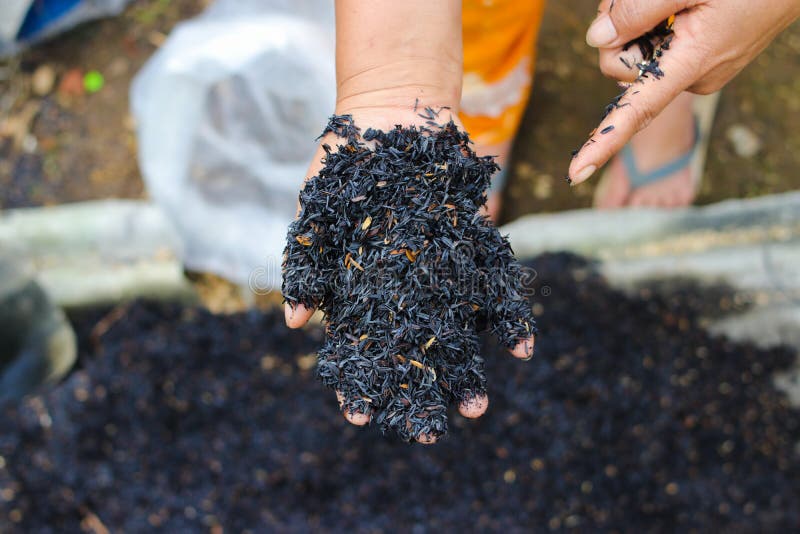
- Determine the Amount: Aim for approximately 10-20% by volume of the total soil mix. Adjust based on soil type, plant variety, and specific nutrient needs. Consult local experts for personalized advice.
- Even Distribution: Spread the carbonized rice hulls evenly across the soil surface.
- Incorporate Gently: Use a rake or garden fork to incorporate them into the top few inches of soil. This enhances water retention and soil structure.
- Complement with Other Amendments: Carbonized rice hulls should be part of a holistic approach. Combine them with compost or fertilizers to create a balanced nutrient profile.
- Monitor Soil Conditions: Regularly check soil moisture, pH levels, and nutrient availability to ensure optimal plant health.
By following these steps, gardeners and farmers can effectively apply carbonized rice hulls to their soil, harnessing the numerous benefits they offer for improved plant health and sustainable agricultural practices.
Carbonized Rice Hulls as a Sustainable Alternative to Peat Moss
Carbonized rice hulls are emerging as a sustainable alternative to peat moss in gardening and agricultural practices. Peat moss, which is commonly used for soil amendments, is derived from peat bogs, resulting in the depletion of this non-renewable resource and significant environmental damage. In contrast, carbonized rice hulls offer a renewable and eco-friendly alternative that can have numerous benefits for soil quality and plant growth.
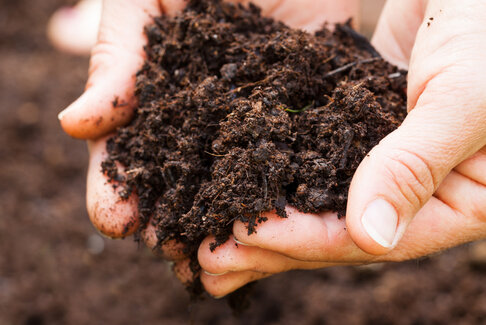
Improved Soil Structure and Drainage:
- The carbonization process removes organic components from rice hulls, resulting in a lightweight material that retains water while allowing efficient drainage. This promotes optimal conditions for plant roots by reducing the risk of root rot and other water-related issues.
Enhanced Water Retention and Drainage:
- Carbonized rice hulls retain water while allowing excess moisture to drain efficiently, creating optimal conditions for plant roots. This promotes healthy growth and reduces the risk of water-related issues such as root rot.
Improved Aeration and Nutrient Uptake:
- The porous nature of carbonized rice hulls enhances soil aeration, facilitating root respiration and nutrient uptake. This contributes to healthier plant growth and development.
Natural Weed Suppression and Pest Control:
- The high silica content in rice hulls acts as a physical barrier to weed germination and growth, reducing the need for chemical herbicides. Additionally, the carbonization process eliminates pests and pathogens, contributing to a healthier and more sustainable gardening environment.
Furthermore, the harsh conditions created during the carbonization process eliminate pests and pathogens that may otherwise harm the plants. This natural pest control method contributes to a healthier and more sustainable gardening environment.
Carbonized Rice Hulls in Hydroponic Systems

Hydroponic systems are popular among gardeners who want to cultivate plants in a controlled environment without the need for soil.
One effective and sustainable option for enhancing these systems is the use of carbonized rice hulls. Carbonized rice hulls are a byproduct of the carbonization process, where rice hulls are heated to high temperatures in the absence of oxygen.When incorporated into hydroponic systems, carbonized rice hulls offer several advantages.
- Water Retention: Carbonized rice hulls absorb and retain water, maintaining consistent moisture levels in the root zone.
- Nutrient Buffer: They act as a buffer, preventing nutrient imbalances and maintaining optimal pH levels in the nutrient solution.
By incorporating carbonized rice hulls, hydroponic gardeners can enhance water management and promote healthier plant growth. 🌱💧. Additionally, carbonized rice hulls act as a buffer, preventing nutrient imbalances and maintaining optimal pH levels in the nutrient solution.
Common Misconceptions about Carbonized Rice Hulls
acidity of the soil
One common misconception about carbonized rice hulls is that they contribute to the acidity of the soil. However, this is not true. Carbonized rice hulls have a neutral pH, which means they do not significantly affect the acidity or alkalinity of the soil. In fact, they can even help to balance the pH levels in acidic soils, making them more suitable for plant growth.
beneficial for certain types of plants
Another misconception is that carbonized rice hulls are only beneficial for certain types of plants. While it is true that some plants, such as orchids and ferns, thrive in a growing medium that contains carbonized rice hulls, they can also benefit a wide range of other plants. The porous structure of carbonized rice hulls allows for excellent aeration and drainage in the soil, promoting healthy root development. Additionally, they act as a natural insulator, protecting the roots from extreme temperatures.
By debunking these misconceptions, it becomes clear that carbonized rice hulls are a versatile and beneficial gardening resource. Their neutral pH and ability to provide excellent aeration and insulation make them a valuable addition to any garden or hydroponic system. When used correctly, carbonized rice hulls can contribute to the overall health and success of plant growth while also promoting sustainable and eco-friendly gardening practices.
Case Studies and Success Stories of Using Carbonized Rice Hulls
Carbonized rice hulls have gained popularity in the gardening and agriculture community due to their numerous benefits. Several case studies and success stories have highlighted the positive impact of using carbonized rice hulls in various applications.
A renowned agricultural institute conducted a case study to assess the impact of incorporating carbonized rice hulls into the soil. Results showed significant improvements in soil quality, including enhanced water infiltration and retention, increased soil porosity, and improved nutrient availability. Plants grown in soil amended with carbonized rice hulls exhibited healthier growth and higher yields compared to those in untreated soil.
A hydroponic farm implemented carbonized rice hulls into their system and reported notable benefits. The grower observed improved water retention and a decrease in the frequency of irrigation. This led to water savings and provided a stable environment for plant growth, resulting in enhanced crop quality and increased productivity.
These case studies and success stories highlight the effectiveness of carbonized rice hulls in enhancing soil quality, improving water retention, and promoting plant growth. As more agricultural enthusiasts and professionals explore the benefits of carbonized rice hulls, it becomes evident that this sustainable alternative holds great potential for sustainable gardening and farming practices.
Expert Tips and Recommendations for Using Carbonized Rice Hulls
When it comes to using carbonized rice hulls in your gardening practices, there are a few expert tips and recommendations that can help you maximize their benefits.
Ensure Proper Carbonization:
- Confirm that the rice hulls have undergone proper carbonization, a process involving high temperatures to enhance their characteristics. Source carbonized rice hulls from trusted suppliers adhering to quality control standards.
Mixing with Soil or Growing Medium:
- Before planting, mix the carbonized rice hulls with your soil or growing medium. The recommended ratio is one part carbonized rice hulls to three parts soil or growing medium. This enhances soil structure, water retention, and nutrient availability for healthier plants.
Application as Top Dressing:
- Use carbonized rice hulls as a top dressing around established plants to create a protective layer and retain moisture in the soil. This helps maintain optimal soil conditions for plant growth and development.
Monitor Moisture Levels:
- Regularly monitor moisture levels in the soil and adjust irrigation practices accordingly. Proper irrigation management ensures that plants receive adequate water while preventing waterlogging or drought stress.
Follow Expert Recommendations:
- Incorporate expert tips and recommendations for using carbonized rice hulls effectively in your garden. By following best practices, you can maximize the benefits of carbonized rice hulls and promote the health and productivity of your plants.
Conclusion: Harnessing the Power of Carbonized Rice
In conclusion, the process of carbonizing rice hulls offers numerous benefits and opportunities for gardeners and agricultural enthusiasts.
- Enhanced Soil Quality: Carbonized rice hulls improve soil structure, aeration, and drainage, leading to healthier plant growth.
- Improved Water Retention: These hulls retain moisture, reducing the need for frequent irrigation and conserving water.
- Weed Suppression: The use of carbonized rice hulls as mulch helps suppress weed growth, minimizing competition with crops.
- Natural Pest Control: The carbonized form acts as a physical barrier, deterring pests and insects from reaching plant roots.
- Sustainable Alternative to Peat Moss: Carbonized rice hulls offer an eco-friendly substitute for peat moss, which is often harvested unsustainably.
- Tested Success: Case studies and experiences from experts and enthusiasts demonstrate the effectiveness of carbonized rice hulls in gardening.
By harnessing the power of carbonized rice hulls, gardeners can nurture healthier plants, conserve water, and contribute to a more sustainable and environmentally friendly approach to horticulture. So why not embrace the potential of carbonized rice hulls and embark on a greener gardening journey?
Watch video for more information:
FAQ
What is the process of carbonizing rice hulls?
The process of carbonizing rice hulls involves heating them in a controlled environment to convert them into a carbonized form.
What equipment is needed for carbonizing rice hulls?
The equipment needed for carbonizing rice hulls includes a carbonization chamber or kiln, a heat source, and ventilation systems.
Can you provide a step-by-step guide to carbonizing rice hulls?
Unfortunately, we can’t provide a step-by-step guide in this FAQ section. Please refer to the article for a detailed step-by-step guide on carbonizing rice hulls.
Why is proper preparation important before carbonization?
Proper preparation ensures the removal of impurities and moisture from rice hulls, leading to a more efficient carbonization process.
What factors should be considered in preparing rice hulls for carbonization?
Factors to consider in preparing rice hulls for carbonization include moisture content, size, and cleanliness of the hulls.
How long does the carbonization process typically take?
The duration of the carbonization process varies depending on the equipment used and the desired level of carbonization. It can range from a few hours to several days.
What are the benefits of using carbonized rice hulls?
Some benefits of using carbonized rice hulls include enhanced soil quality, improved water retention, weed suppression, and pest control.
How can carbonized rice hulls enhance soil quality?
Carbonized rice hulls can enhance soil quality by increasing organic matter content, improving soil structure, and promoting beneficial microbial activity.
Can carbonized rice hulls help improve water retention in soil?
Yes, carbonized rice hulls have the ability to improve water retention in soil by increasing its water holding capacity and reducing water evaporation.
Do carbonized rice hulls help with weed suppression and pest control?
Yes, carbonized rice hulls act as a natural weed suppressant and can help control certain pests by creating a physical barrier and altering the soil environment.
How should carbonized rice hulls be applied to soil?
Carbonized rice hulls can be applied to soil by spreading them evenly over the surface or incorporating them into the soil during tilling or planting.
Are carbonized rice hulls a sustainable alternative to peat moss?
Yes, carbonized rice hulls are considered a sustainable alternative to peat moss as they are renewable, readily available, and do not contribute to peatland depletion.
Can carbonized rice hulls be used in hydroponic systems?
Yes, carbonized rice hulls can be used in hydroponic systems as a growing medium due to their ability to retain moisture and provide aeration to the plant roots.
What are some common misconceptions about carbonized rice hulls?
Some common misconceptions about carbonized rice hulls include them being ineffective as a soil amendment, lacking nutrient content, or causing pH imbalances.
Are there any case studies or success stories of using carbonized rice hulls?
Yes, the article mentions case studies and success stories of using carbonized rice hulls. Please refer to the article for more information.
Can you provide expert tips and recommendations for using carbonized rice hulls?
Expert tips and recommendations for using carbonized rice hulls are provided in the article. Please refer to the article for detailed information.
In conclusion, what is the power of harnessing carbonized rice hulls?
Harnessing the power of carbonized rice hulls can lead to improved soil quality, enhanced water retention, effective weed suppression, and sustainable agricultural practices.

Studied Agricultural Engineering-Plant Protection at University of California, Davis.
Head of Content writing team at Southelmontehydroponics.com

